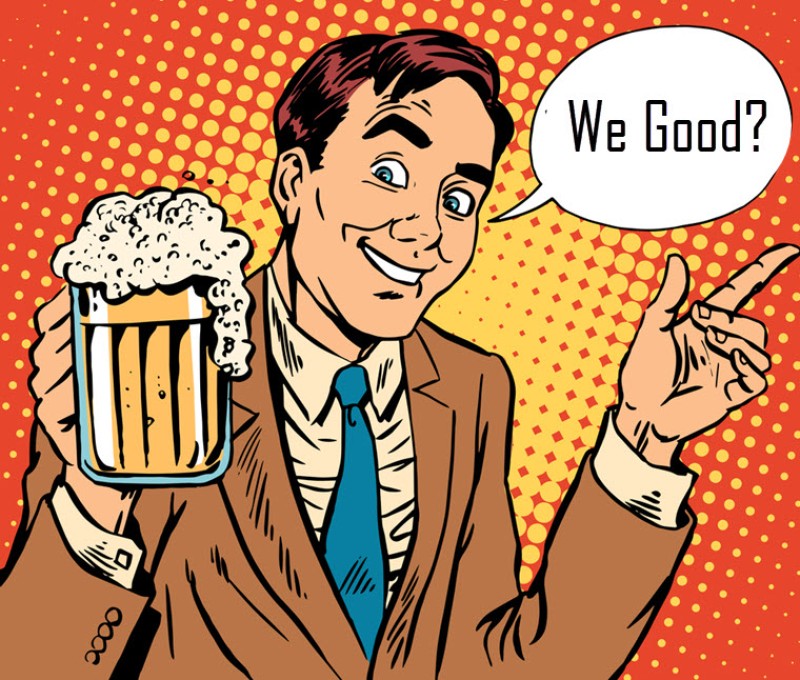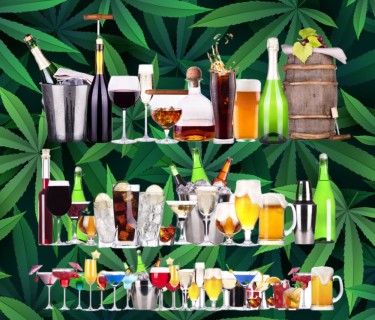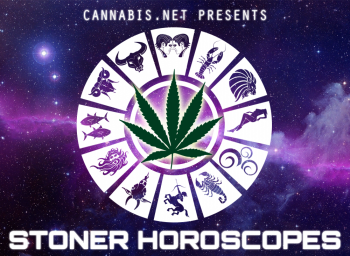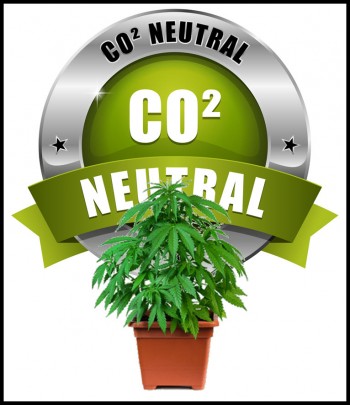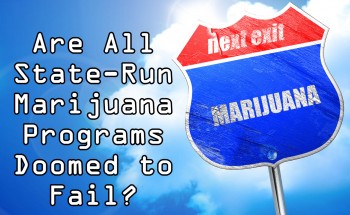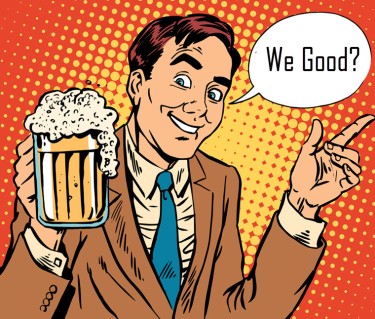
Beyond the Bottle: My Adventures with Cannabis Beverages and Why Alcohol Companies Can Rest Easy...For Now
The sleek black can sat in my refrigerator for nearly three weeks, tucked behind leftovers and condiments like some kind of forbidden temptation. "60MG THC" it proclaimed in bold lettering—a cannabis-infused beverage promising an experience unlike my usual joint or vape. As someone who's spent two decades exploring cannabis in various forms, I was intrigued but cautious. This wasn't just another cannabis product; it represented what alcohol companies fear most—a direct competitor for recreational dollars that doesn't lead to hangovers, weight gain, or liver damage.
For years now, alcohol industry newsletters and earnings calls have increasingly mentioned cannabis as a threat to their bottom line. When major players like Constellation Brands (owner of Corona) invest billions in cannabis companies, it's not random diversification—it's hedging against disruption. The Wholesale Beer Distributors of Texas didn't just randomly decide to lobby for anti-cannabis legislation; they recognized an existential threat.
Cannabis beverages represent perhaps the most direct challenge to alcohol's dominance. They come in similar packaging, offer comparable social consumption experiences, and promise relaxation without the physical damage of ethanol. Sales of these products increased 40% last year alone, with some markets reporting that over 20% of legal cannabis purchases now come in liquid form.
But would these drinks actually deliver a positive experience that could rival the familiarity of cracking open a cold beer? Could they genuinely replace alcohol as a social lubricant? After weeks of procrastination, I finally decided to find out firsthand. I cleared my schedule, made sure my responsibilities were handled, and prepared to test whether Torch's "Raspberry Lemonade" with its whopping 60mg of THC might be the future of recreational consumption—or just another cannabis novelty.
What followed was an experience that taught me volumes about the cannabis beverage market, the challenges of standardization, and why alcohol companies might be able to breathe a little easier...at least for now.
The Experience: Not Quite a Night on the Town
I'd been eyeing that Torch THC Lemonade for weeks, waiting for the perfect moment to conduct my "research." As a responsible parent and writer, I needed to ensure I had time to fully experience the effects without obligations. Finally, on a quiet evening when my partner was available to handle any parental duties, I cracked open the can.
The beverage itself was unremarkable in appearance—it looked like any premium raspberry lemonade you might find at a grocery store. The taste, however, was more complex. The first sips revealed a slight bitterness beneath the sweetness, with subtle cannabis notes lurking in the background. Not unpleasant, but certainly not as enjoyable as a well-crafted beer or cocktail. The mouthfeel was closer to a seltzer than a traditional lemonade, with that distinct "diet drink" quality that comes from artificial sweeteners.
As someone who responds quickly to substances, I knew I wouldn't need to wait long. About 30 minutes after finishing the can, I felt the first unmistakable waves of THC onset. The initial effects were gentle—a slight elevation in mood, enhanced sensory perception, and that familiar cannabis relaxation beginning to spread throughout my body.
However, what happened next revealed why cannabis beverages aren't ready for prime time. Rather than plateauing at a pleasant, manageable level like a couple of beers might, the effects continued to intensify dramatically. By the 90-minute mark, I found myself in unexpectedly deep waters. The high wasn't panic-inducing—my years of experience had taught me how to navigate strong cannabis effects—but it was far more intense than I had anticipated from a single beverage.
Being a seasoned psychonaut, I employed deep diaphragmatic breathing techniques to maintain my composure. I reminded myself that this was temporary and focused on accepting the experience rather than fighting it. Nevertheless, the intensity forced me to lie down as the room began to tilt and sway around me.
Fortunately, this coincided with my three-year-old's bedtime. In what turned out to be a surprisingly magical moment, I found myself lying beside him, listening to soft jazz music as I lulled him to sleep. The music sounded extraordinarily rich and textured—one of cannabis's more beautiful effects—and I felt a deep connection with my child. Before I knew it, both of us had drifted off to sleep, the combination of THC and my pre-existing sleep deficit proving irresistible.
Here's where the experience took an unexpected turn. I woke around midnight with a splitting headache and cotton mouth so severe it felt like I'd spent a day in the desert. After downing two glasses of water and some leftover dinner, I was surprised to find myself feeling distinctly... hungover? The sensation was reminiscent of the day after too many beers—something I had specifically hoped to avoid by choosing cannabis over alcohol.
The following morning, rather than waking refreshed, I still had the headache and a foggy mental state that persisted until early afternoon. A pain reliever and substantial breakfast eventually turned the tide, but the experience left me perplexed. This was supposed to be the healthier alternative to alcohol?
For all the hype and fear surrounding cannabis beverages, my experience rated a disappointing 3/10. Yes, it delivered substantial psychoactive effects, but the overall experience—from taste to intensity control to aftereffects—failed to make a compelling case for replacing my occasional beer or glass of wine.
The Standardization Problem: Why Your Endocannabinoid System Isn't Mine
My less-than-stellar experience highlights perhaps the biggest hurdle facing cannabis beverages: standardization. With alcohol, the relationship between consumption and effect is relatively predictable. I know that two beers will give me a pleasant buzz, four will make me decidedly tipsy, and six would put me firmly in drunk territory. This predictability is consistent across individuals with minor variations.
Cannabis works entirely differently, and this fundamental difference makes standardizing the cannabis beverage experience nearly impossible with current technology.
"The endocannabinoid system varies dramatically between individuals," explains Dr. Ethan Russo, neurologist and cannabis researcher. "Some people have naturally higher concentrations of cannabinoid receptors, while others have genetic variations that affect how they metabolize THC. This creates enormous variability in how people respond to the same dose."
This variability is compounded by how the body processes edible cannabis. When THC is ingested rather than inhaled, it passes through the liver where it's converted to 11-hydroxy-THC, a metabolite approximately 5-10 times more potent than delta-9-THC. This conversion happens at different rates and efficiencies in different people.
"It's like everyone has a different engine for processing cannabis," notes Dr. Peter Grinspoon, a Harvard Medical School instructor who specializes in cannabis medicine. "Some people have a Ferrari liver that converts THC extremely efficiently, while others have a more modest sedan. Give them both the same dose, and one person may feel overwhelmed while the other barely notices effects."
With smoking or vaping, this variability is less problematic because the effects are felt almost immediately, allowing users to self-titrate—take a puff, wait a minute, decide if more is needed. With beverages, the delayed onset creates a dangerous window where consumers might think "I don't feel anything" and consume more, only to find themselves overwhelmed when the first dose finally kicks in.
The 60mg in my single can of Torch would be an astronomical amount for a cannabis novice. For context, most medical professionals recommend starting with just 2.5-5mg for new users. Even as someone with substantial cannabis experience, 60mg proved more intense than enjoyable.
This unpredictability creates a fundamental barrier to social adoption. Imagine a world where one beer might feel like nothing, while another identical-looking beer might leave you incapacitated for hours. Would you risk that at a social gathering? Would you trust that product over one with consistent, predictable effects?
Until cannabis beverage manufacturers can solve this standardization problem—perhaps through nano-emulsification technologies that provide more consistent absorption and faster onset—alcohol's predictability gives it a significant advantage for social situations.
Why the Alcohol Industry Is Safe...For Now
My experience with Torch's THC Lemonade crystallized why the alcohol industry, despite its nervous glances toward cannabis, isn't likely to be dethroned in the immediate future.
First, there's the social ritual factor. Alcohol has centuries of cultural integration behind it. We know how to drink socially—when to stop, what constitutes a standard serving, what effects to expect. Cannabis beverages offer none of this predictability. The intense, somewhat isolating high I experienced wouldn't lend itself to socializing at a party or unwinding with friends after work.
"Alcohol's greatest strength is its predictability," explains Spiros Malandrakis, Head of Alcoholic Drinks Research at Euromonitor International. "Consumers know exactly what they're getting with each drink. Cannabis beverages remain a wildcard, which limits their appeal for regular social consumption."
Then there's the taste factor. While cannabis beverages have improved dramatically, few can match the refined flavor profiles of a craft beer, fine wine, or well-made cocktail. My Torch lemonade was acceptable but hardly a pleasure to sip slowly and savor. Until cannabis beverages can deliver a genuinely enjoyable culinary experience, they'll struggle to compete with alcohol's gastronomic appeal.
The after-effects present another challenge. My surprising "cannabis hangover" included a headache and mental fog comparable to a night of drinking. While this isn't universal—many users report no negative after-effects from cannabis beverages—it undermines a key selling point of cannabis as the "hangover-free" alternative to alcohol.
Perhaps most importantly, cannabis beverages currently lack alcohol's sociability factor. My experience left me introspective and eventually sleepy—hardly the state of mind for stimulating conversation or dancing at a club. While some lower-dose products might better thread this needle, the current generation of cannabis beverages seems more suited to solo relaxation than social engagement.
"Cannabis and alcohol offer fundamentally different experiences," notes Katie Stem, CEO of Peak Extracts. "Alcohol reduces inhibitions and increases sociability in ways that cannabis typically doesn't. They're different tools for different purposes."
This isn't to say cannabis beverages won't evolve. The industry is rapidly improving formulations, developing faster-acting products with more predictable effects, and experimenting with lower-dose options more suitable for social situations. Companies are also exploring compounds beyond THC, including minor cannabinoids and terpenes that might create more alcohol-like social effects without ethanol's downsides.
But for now, my 60mg misadventure suggests that alcohol manufacturers can breathe a bit easier. The cannabis beverage revolution may be coming, but it hasn't quite arrived.
The Sticky Bottom Line
After my experiment with Torch's 60mg THC lemonade, I've gained a new perspective on the future of recreational substances. While cannabis beverages represent an intriguing alternative to alcohol, they're still in their awkward adolescence—not quite ready for mainstream adoption as a direct alcohol replacement.
The experience wasn't terrible, but it also wasn't the game-changing revelation that would make me abandon other consumption methods. The unpredictable intensity, the surprising next-day effects, and the utilitarian rather than pleasurable taste all left me skeptical about cannabis beverages becoming alcohol's true competitor—at least in their current form.
This doesn't mean cannabis beverages are doomed. The market is evolving rapidly, with companies developing micro-dosed options (typically 2-5mg THC), faster-acting formulations, and more sophisticated flavor profiles. These innovations may eventually solve the standardization and social experience problems that currently limit the category's potential.
I do plan to continue my "research," trying lower-dose products and different formulations. Perhaps brands like Cann, with their 2mg THC/4mg CBD social tonics, offer a more viable blueprint for alcohol alternatives than my high-potency Torch experience. There's clearly a place for cannabis beverages in the recreational substance ecosystem—I'm just not convinced they're ready to dethrone beer, wine, and spirits quite yet.
So to the alcohol industry executives losing sleep over cannabis beverages: you've got some breathing room. Your century-old business model isn't facing immediate disruption. But don't get too comfortable—cannabis companies are highly motivated, increasingly sophisticated, and backed by significant capital. The first generation of cannabis beverages may not replace your after-work beer, but the fifth or sixth generation just might.
As for me, I think I'll stick to my traditional joint when I want to unwind with cannabis. Sometimes the classics are classics for a reason.
BIG ALCOHOL MOVES IN ON CANNABIS, READ ON..
BIG ALCOHOL MAKES A MOVE TO TAKE OVER THE MARIJUANA INDUSTRY!

